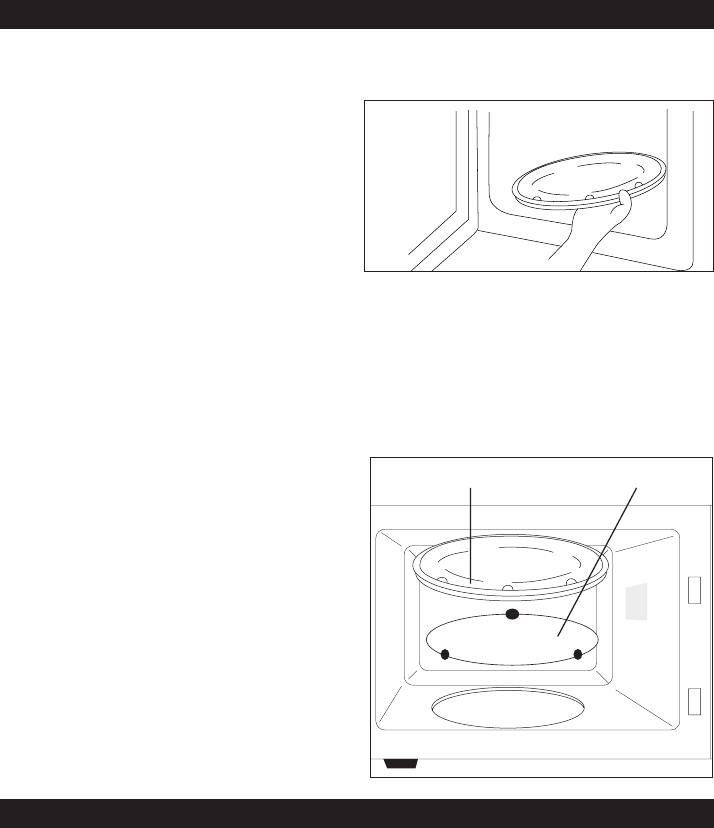
CARE OF YOUR MICROWAVE OVEN
HOW TO USE YOUR MICROWAVE OVEN SAFELY
1
Disconnect the AC plug from the outlet before
cleaning.
2
Keep the inside of the oven clean. When food
spatters or spilled liquids adhere to oven walls,
wipe with a damp cloth. Mild detergent may be
used if the oven gets very dirty. The use of
harsh detergent or abrasives is not
recommended.
3
The outside oven surface should be cleaned
with soap and water, rinsed and dried with a
soft cloth. To prevent damage to the operating
parts inside the oven, water should not be
allowed to seep into the ventilation slots.
4
If the Control Panel becomes dirty or wet, clean
with a soft, dry cloth. Do not use harsh
detergents or abrasives on Control Panel.
5
If steam accumulates on both sides of the oven
door, wipe with a soft cloth. This may occur
when the microwave oven is operated under
high humidity conditions and this is not an
indication of a malfunction in the unit.
6
It is occasionally necessary to remove the glass
tray for cleaning. Wash the tray in warm, sudsy
water or in a dishwasher.
7
The roller guide and oven cavity floor should be
cleaned regularly to avoid excessive noise.
Simply wipe the bottom surface of the oven with
mild detergent water or window cleaner and dry.
The roller guide may be washed in mild, sudsy
water or in the dishwasher.
Roller Guide
1
The ROLLER GUIDE and oven floor should be
cleaned frequently to prevent excessive noise.
2
The ROLLER GUIDE MUST ALWAYS be used
for cooking together with the Glass Tray.
Glass Tray
1
Do NOT operate the oven without the Glass
Tray in place.
2
Do NOT use any other Glass Tray with this
oven.
3
If the Glass Tray is hot, ALLOW IT TO COOL
before cleaning it or placing it in water.
4
Do NOT cook directly on the Glass Tray.
Glass Tray Roller Guide
Although your oven is provided with safety features, it is important to observe the following:
a) It is important not to defeat or tamper with safety interlocks.
b) Do not place any object between the oven face and the door or allow residue to accumulate on sealing
surfaces. Wipe the sealing area frequently with a mild detergent, rinse and wipe dry. Never use abrasive
powders or pads.
c) When opened, the door must not be subjected to strain, for example, a child hanging on an open door or
any load which could cause the oven to fall forward and cause injury and damage to the door. Do not
operate the oven if it is damaged, until it has been repaired by a qualified person. It is particularly important
that the oven door close properly and that there is no damage to the following:
(1) Door (bent), (2) Hinges and Latches (broken or loosened), (3) Door seals and sealing surfaces.
d) The oven should not be adjusted or repaired by anyone except properly qualified service personnel.
6


















